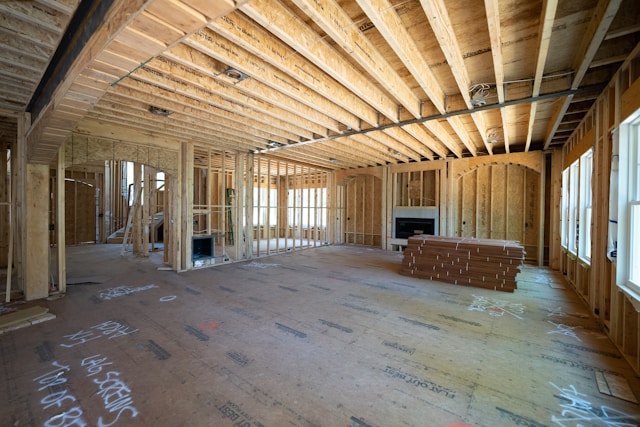It is a well-known fact that the construction sector in Saudi Arabia is undergoing a significant digital transformation, driven by innovative software development. Today, traditional construction practices are being revolutionized by sophisticated technologies, including Building Information Modeling (BIM), project management software, and advanced data analytics.
These tools are enhancing every phase of construction, from design and planning to execution and maintenance, leading to increased efficiency, reduced costs, and improved project outcomes. As we explore this digital revolution, it becomes evident that software development is not merely an enhancement but a fundamental shift in how we conceive and execute construction projects.
This blog will help you understand the multiple ways in which software development is revolutionizing the construction industry, exploring the latest trends and innovations that are transforming how projects are designed, managed, and executed. So, without further ado, let’s dive right into the details:
Trends Revolutionizing the Construction Ecosystem
Let’s take a closer look at the key trends and innovations in software development that are transforming the construction industry.
Building Information Modeling (BIM)
Building Information Modeling (BIM) represents a transformative approach to construction that integrates 3D modeling with detailed data management. As a pivotal advancement in construction software development, BIM allows for the creation of comprehensive digital representations of the physical and functional characteristics of buildings. By using BIM, all stakeholders—from architects and engineers to contractors and facility managers—can collaborate more effectively throughout the entire lifecycle of a building. The key benefits of BIM include enhanced visualization, which helps in identifying potential issues during the design phase, and the ability to simulate and analyze various aspects of a building’s performance. Additionally, BIM facilitates better coordination and communication, as all project data is integrated into a single, accessible platform. This integration helps in reducing errors and rework, thereby saving time and costs.
Artificial Intelligence (AI) and Machine Learning
Artificial Intelligence (AI) and Machine Learning are increasingly being utilized in the construction industry to analyze vast amounts of data and derive insights that can lead to more informed decision-making. Predictive analytics, a major application of AI, can forecast potential problems such as equipment malfunctions or safety hazards, allowing construction managers to take preventive actions. Machine learning algorithms also automate repetitive tasks such as scheduling, cost estimation, and resource allocation, which minimizes human error and enhances efficiency. Furthermore, AI-powered tools are employed for quality control by inspecting construction sites and materials, identifying defects, and ensuring that projects adhere to specified standards.
Internet of Things (IoT)
The Internet of Things (IoT) is revolutionizing construction by embedding smart sensors and devices into construction sites and equipment. These sensors collect and transmit real-time data on various parameters, such as temperature, humidity, and machinery status. This continuous monitoring helps in making informed decisions, optimizing resource use, and improving site safety. IoT-enabled asset tracking systems enhance logistics by managing the location and status of tools and materials, reducing losses and delays. Wearable IoT devices for workers monitor health and safety conditions, providing alerts for potential hazards and ensuring adherence to safety protocols.
Augmented Reality (AR) and Virtual Reality (VR)
As revealed earlier, Saudi Arabia, the hub of innovation and technological advancement, is witnessing a significant transformation in its construction industry through the adoption of Augmented Reality (AR) and Virtual Reality (VR) technologies. These immersive tools allow stakeholders to explore 3D models in a virtual space, enhancing their understanding of design elements and spatial relationships, leading to more accurate planning and fewer changes during construction. AR overlays digital information onto the physical environment, providing real-time guidance to workers on-site with instructions, design details, or safety information, thereby enhancing precision and reducing errors. Moreover, VR is leveraged for training and simulation, offering a safe environment for workers to practice skills and procedures.
Businesses looking to leverage these advancements can avail software development services in Saudi Arabia by partnering with a dedicated development firm, capable of driving innovation and taking construction projects to new heights.
Cloud Computing
Cloud computing provides scalable and flexible resources for managing construction projects. By utilizing cloud-based platforms, project data can be stored centrally and accessed by all stakeholders, regardless of their location. This enhances collaboration and communication, as everyone has access to the most up-to-date information. Cloud-based project management tools offer features for real-time collaboration, document sharing, and tracking progress, which streamlines workflows and improves efficiency. Furthermore, cloud solutions enable better scalability, allowing companies to adjust resources according to project demands without significant investment in physical infrastructure.
Robotics and Automation
The adoption of robotics and automation in construction is significantly enhancing efficiency and precision. Autonomous robots can perform various construction tasks such as bricklaying, concrete pouring, and welding, often with greater accuracy and speed than human workers. This not only improves quality but also reduces labor costs. Drones are extensively used for site surveys and inspections, capturing high-resolution images and data from difficult-to-reach areas. They help in monitoring progress and identifying issues early. Large-scale 3D printing is another innovative application, enabling the creation of building components or even entire structures, offering new possibilities for design and construction methods.
Sustainability and Green Building
Software advancements are playing a crucial role in promoting sustainability in construction. Energy modeling software can simulate and optimize the energy performance of buildings, helping in the design of more energy-efficient structures. Material optimization tools use advanced algorithms to reduce waste and promote the use of sustainable resources. Additionally, environmental impact analysis software assesses the potential environmental effects of construction projects, ensuring compliance with regulations and helping in the implementation of mitigation strategies. These tools contribute to the development of greener buildings and more sustainable construction practices.
Project Management Software
Advanced project management software solutions are integral to modern construction projects. These tools provide comprehensive features for scheduling, planning, and resource allocation, ensuring that projects stay on time and within budget. Cost management functionalities offer detailed cost estimation, budgeting, and financial tracking, providing better control over project finances. Risk management tools within these platforms help identify and assess potential risks, offering strategies for mitigation and ensuring project resilience. Overall, project management software enhances the coordination, efficiency, and accountability of construction projects.
Conclusion
The integration of advanced software solutions in the construction industry is revolutionizing how projects are planned, executed, and managed. These technologies are driving efficiency, enhancing collaboration, improving safety, and promoting sustainability. As the industry continues to embrace digital transformation, the future of construction looks promising, with smarter, more efficient, and more resilient buildings and infrastructure.







